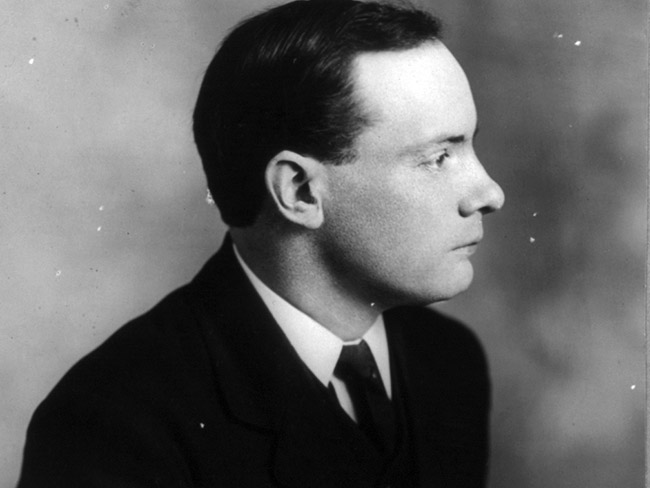
“naked I saw you,
o beauty of beauties”
These are the opening lines of Padraig Pearse’s transformative poem “Fornocht do Chonac thú.” Pearse had taken a trope of modern Irish poetry and transformed it into a powerfully symbolic gesture of self-sacrifice and heroism.
In doing so, he not only provided an answer to a burning question in the revivalist Gaelic literature movement -whether the nascent modern Irish literature should reference ancient Gaelic literature or should be derived from the folk vernacular- but he inverted the Aisling and tied the imagery of nationalism to the sacred ideal of self-sacrifice.
During the era of the penal code in Ireland the political Aisling became an ubiquitous statement of Gaelic nationalist aspiration. In the Aisling, the poet is visited by a vision; a supernatural embodiment of the sacred ties of homeland, and incited to take on his duty and expel the foreign oppressor. The Aisling promises that the reward of duty will be liberty.
There are so many examples of these poems, preaching the same message; revolt and you will be liberated.
Pearse describes a different type of vision. In fact his poem centres around knowing that the price of duty is death. It is a toll that he struggles with and turns from; before finally accepting his duty and his destiny.
 In Pearse’s Aisling, duty is a burden which will extoll the highest price. He joins the nationalistic fervour of this most politicised poem to the religious symbolism of Christ’s passion. Like Christ, he knows that his duty will lead to death and he fears accepting it. Like Christ, he agonises over whether he should chose duty or life, and like Christ he accepts duty and its consequent price.
In Pearse’s Aisling, duty is a burden which will extoll the highest price. He joins the nationalistic fervour of this most politicised poem to the religious symbolism of Christ’s passion. Like Christ, he knows that his duty will lead to death and he fears accepting it. Like Christ, he agonises over whether he should chose duty or life, and like Christ he accepts duty and its consequent price.
Pearse’s symbolism is so powerful, and is heightened by a syntactical ambiguity which he opens with, but doesn’t quite answer. “Naked I saw you”
Who is naked? Is it the poet, bereft of uncertainty; of chance; vulnerable and helpless before the enormity of his destiny? Or is it the Vision which is naked, revealing all with dreadful clarity?
In the Aisling tradition, Duty rewards with liberty. In Pearse’s Aisling, Duty promises death. But it also promises a thing which Pearse preached increasingly, a noble sacrifice that can transform a nation.
20/01/17 Wexford Arts Centre
31/03/17, 8pm An Táin Arts Centre, Dundalk
02/04/17 5pm Seán O Casey Theatre, East Wall, Dublin
29/04/17 8pm Culturlann, Belfast
24/07/17 Folk Holidays Czech Rep
30/07/17 Skibereen Arts Festival
30/01/16 Dublin TBtradfest
31/01/16 Dublin TBtradfest
02/02/16 Derry DITMF
11/08/16 Lorient France
Festival Interceltique
16/08/16 Ennis
Fleadh Cheoil na hÉireann
30/09/16 Monoghan
Iontas Arts Centre
Album release gig in
Músaem an bPiarsach
St. Enda's Rathfarnham
15/10/16 ; 3:30pm
ART: 2016 is the Arts Council's programme as part of Ireland 2016. It is a diverse and distinctive public showcase of Irish art which will be presented across Ireland and abroad throughout the year. Key programme strands include the Open Call National Project Awards, which feature cutting-edge, contemporary art events in dance, visual arts, poetry and music; the Next Generation Bursary Awards which highlight the work of eighteen rising stars of Irish art; and A Nation's Voice, an open-air, free concert at Collins Barrack on Easter Sunday, featuring new choral and orchestral work by Shaun Davey and Paul Muldoon, and the voices of a 1,100-strong choir. The programme also includes a selection of national touring productions.
ART: 2016 is supported by the Department of Arts, Heritage and the Gaeltacht through its Ireland 2016 Centenary Programme and is created with a range of partners; local, national and international